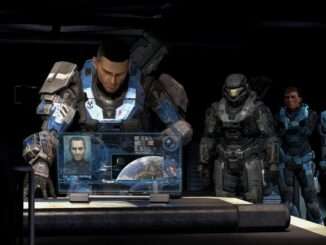
Halo MCC Guides:
- All Collectibles / Datapads in Halo Reach.
- We’re Gonna Need a Bigger Ship Achievement.
- The Humble Beginnings of Wiljax Brantley Achievement.
- This is Not the Greatest Lab in the World… Achievement.
- Solving Content not Installed or Still Downloading…
- Xbox Live Account for Steam Version of the Game.
- Campaign Tips and Tricks (Halo Reach).
- Stuck on Connecting Session / The Fix.
- How to Maximize Your XP Gain.
- More Guides…
A write up I did of things I found that helped resolve some of the XBox networking and matchmaking issues.
Multiplayer Issues Guide
Note: Credit goes to Clytbuster
Your friendly neighborhood IT’smen here… if you are having multiplayer issues I feel bad for you son, I’ve got some things for you to check and no I won’t fix your computer or connectivity issues but hopefully this information will get you online and playing. Please read the entire post as one or all of these things may affect your ability to play online and I want more people online to dunk on…. also I am posting some more in depth changes to your machine/firewall. You and you alone are responsible for fixing any issues that you may cause to your machine if you mess up these settings, so please make any posted changes with caution. (This write up also assumes that you have a basic understanding of IP’s, DNS and Router configuration although I have included some links for assistance.)
To start this off… if you are having issues finding games and have enabled the relay function from within the settings in the Halo MCC menu, turn it off. It seems to not be working or only matching you with others who have it enabled. (or there is an underlying issue with that function but I wasn’t able to get into games with it enabled)
Now onto the XBox Live / Windows 10 / XBox Console Companion networking functions that may be causing your multiplayer connectivity issues. Halo MCC relies on the underlying Windows 10 functions that tie it to XBox Live. These functions include the Windows 10 Gaming configurations, Teredo Tunneling and Windows Firewall.
In order to check your Windows 10 to review your machines connection status, you will go to your start menu and type settings and press enter. Once in the settings screen there is a Gaming icon… click that and it will bring you into the Gaming window. On the left hand viewing pane you will see XBox Networking. Select that and it will begin its first test of your machines ability to connect to all the services. Even if you can connect, it may fail the first time with an error message of “Teredo is unable to qualify.”. This is because XBox uses the Teredo “interface” to connect your machine to the XBox live services and it takes it longer than the check to start the tunnel. Select “Check again” and it will re-run the test and display your connection settings.
It should return the following:
Connection Status
- Internet Connection: Connected
- XBox Live services: Online/Connected (or Some services are experiencing issues if XBox Live is currently having issues)
Performance
- Latency: 67ms (or something higher or lower depending on your region and distance to these servers)
- Packet Loss: 0% (or something higher if your connection has packet loss)
XBox Live multiplayer
- NAT Type: Open (Moderate/Strict if there are issues with your machine making the correct connection inbound)
- Server Connectivity: Connected (or Unable to connect)
After reviewing the status of items… if they are anything but the defaults that I have shown, this is likely why you are having issues connecting to multiplayer or having long queue times. (XBox NAT types affect the player base that you are allowed to connect to which may lengthen the wait time).
So now onto some steps to fix some of these issues. If your Internet Connection, XBox Live Services, Performance and Latency are not close to what I have posted these will be directly related to your machines connection to your network or the internet. You will want to ensure you have a good connection to your local switch, router, access point etc etc. If you are gaming over a wireless mesh network you will have poor performance with latency and packet loss no matter what you do…. sorry. If you fall into this category please review these posts from Microsoft on the requirements for connectivity for XBox Live. These may require DNS changes or Firewall changes.
- Connect to your Xbox Live account with Xbox on Windows games.
- Xbox 360 network ports and router configurations for Xbox Live.
Now onto troubleshooting NAT Type and Server Connectivity. Connecting to XBox Live multiplayer requires your Firewall to either allow UPNP or have a port forwarded to allow the Teredo Tunneling interface to start and connect to the XBox live service. There are a few steps to this one. To get your NAT Type to open you will either need to have a Firewall that has UPNP enable (which should be on most models of home routers and which personally I dont think it should be) or you will need to set your Teredo interface on your machine and forward the port on your Firewall.
Do this next step at your own risk (because be smart and don’t trust everything you read on the internet.
From your start menu search for Command Prompt, right click Command Prompt and select “Run as Administrator”. This will open a black command prompt window with a blinking cursor. You will type NETSH and hit enter. Then type INTERFACE and then hit enter. Then type Teredo and hit enter. You should now see this in the command prompt: netsh interface teredo>. Once you are here you are going to enter “set state clientport=60209” and hit enter. This is setting the port statically so you can port forward for this Teredo interface from your Firewall. Now, as you have set this port, you will need to login to your Firewall and using the port forwarding function to port forward TCP/UDP 60209 to your computers internal IP address.
After you have created the port forward to your machine you will need to reboot your device. (This is to allow the Teredo interface to reset) Once rebooted you can now go back to Settings/Gaming/XBox Networking and do two “Check agains”. On the second test you should hopefully see your NAT Type set to Open. Now you still may see that your Server Connectivity may still show unable to connect or give the same “Teredo unable to qualify” message. In order for the Teredo Tunnel to start it requires that you have Windows Firewall enabled. The Firewall being enabled ensures that all the needed Tunneling files/services are loaded. To check if your Windows Firewall is enabled, from the start menu search “Windows Defender Firewall” and go into this app. Once in the Firewall application You will see multiple networks in the Windows Defender Firewall window. They should show “Private or Guest or Public networks” colored Green with Green check marks. If they are not Green you can enable them from the left pane in this Window by selecting “Turn Windows Defender Firewall on or off”. Select that and select the radials for all “Turn on Windows Defender Firewall” and select okay. Once you have done this you will want to restart your machine once more and then go back to Setting/Gaming/XBox Networking and check the status again.
Conclusion
You should now have all the connected defaults I have posted above and be able to connect to multiplayers servers and match with players “relatively” quick. This is not a cure all solve all for Halo MCC connectivity issues… but its something and I hope it helps.





Be the first to comment